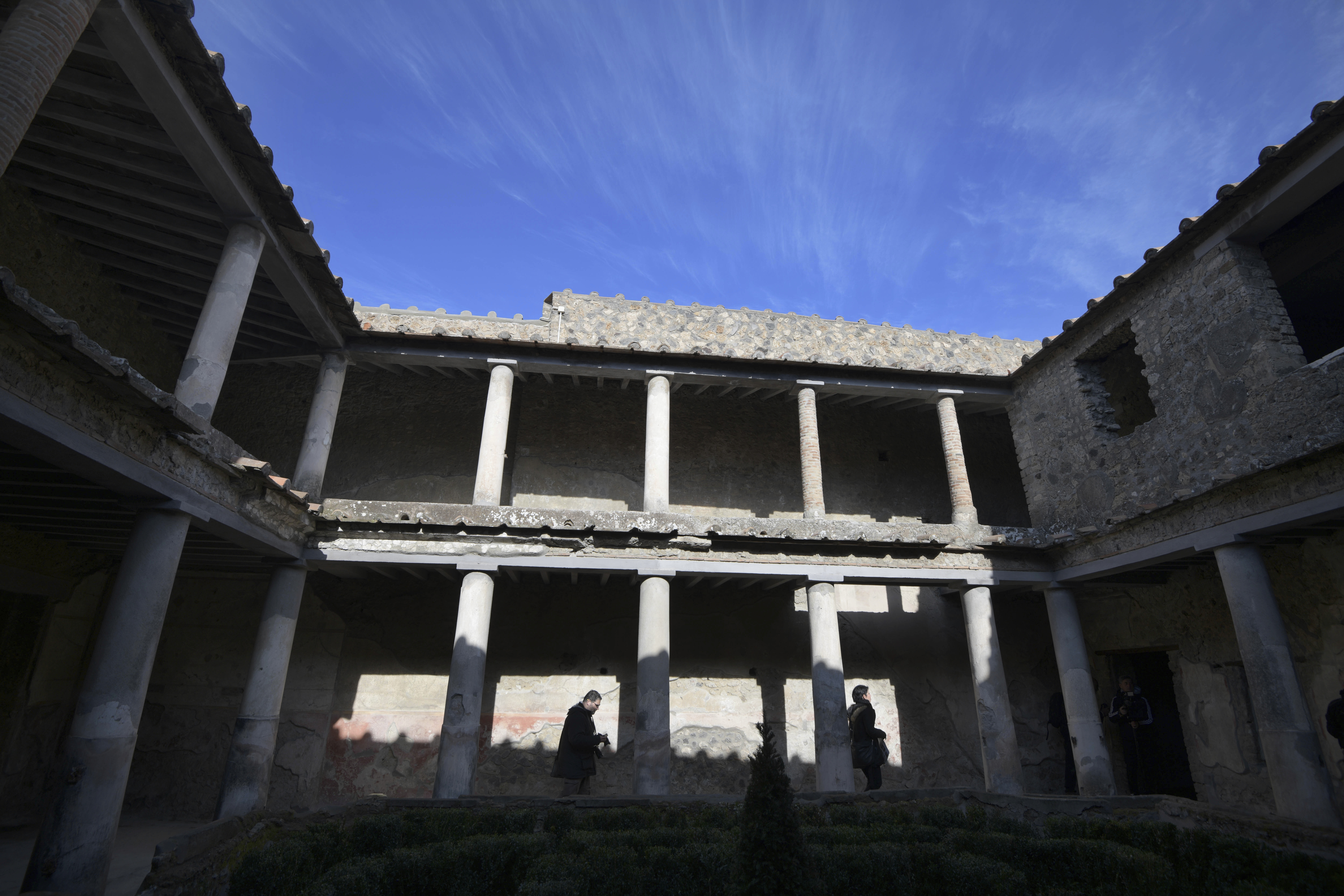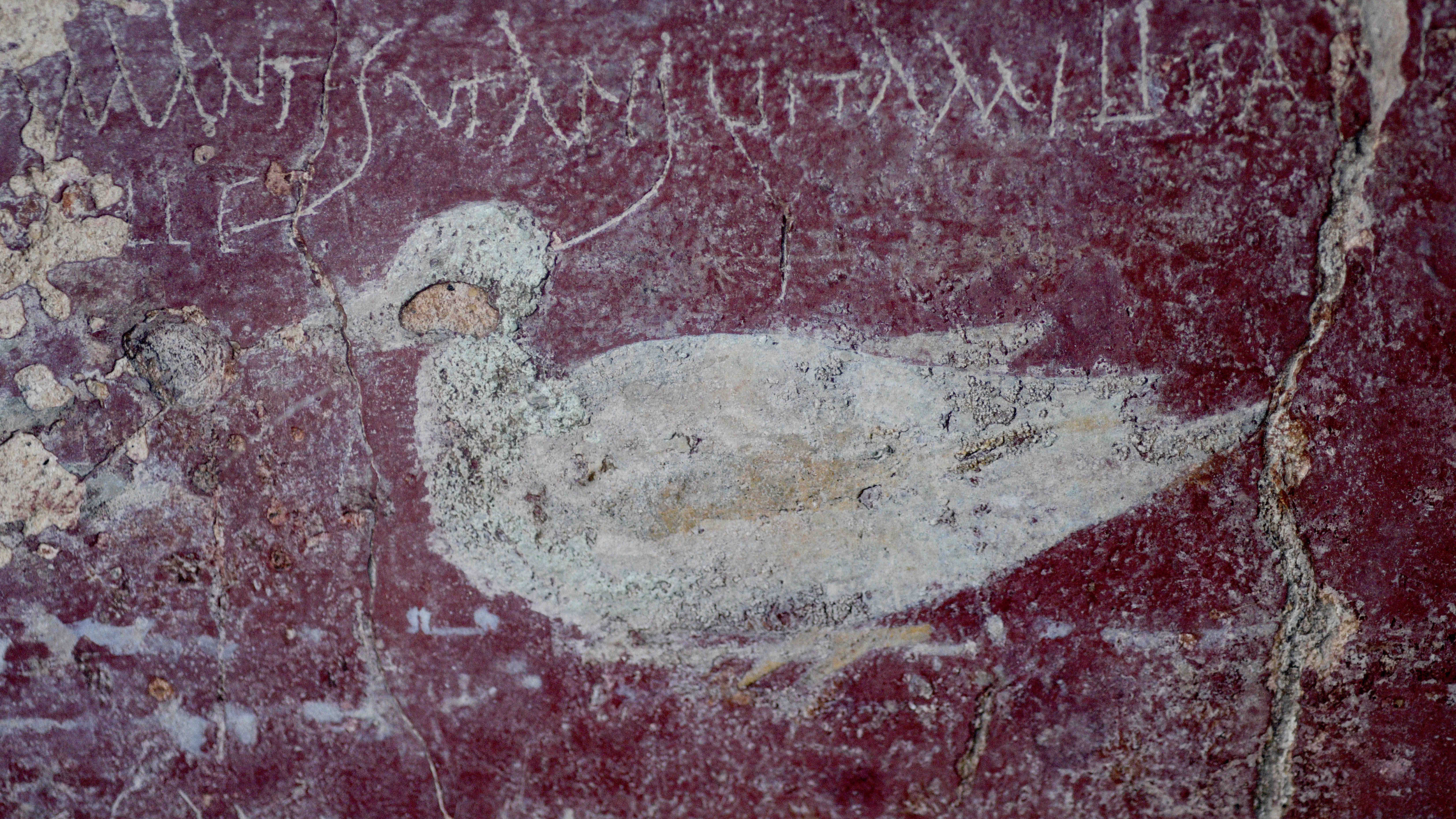
The "House of Lovers", in Pompeii, Italy, (Credit: Alessandro Pone/LaPresse via AP)
The "House of Lovers", in Pompeii, Italy, (Credit: Alessandro Pone/LaPresse via AP)
Forty years after it was seriously damaged in an earthquake, one of the most renowned buildings of the ancient Roman city of Pompeii has been reopened after the site's overall restoration was also completed, cultural authorities said.
The so-called "House of Lovers" was reopened in an official ceremony led by Italy's Minister of Cultural Heritage Dario Franceschini and the Pompeii Archaeological Park's management.
Discovered in 1933, the villa had been closed after an earthquake hit the Naples area in 1980. It has now been restored and stabilized.
Its name is derived from a Latin inscription to the right of its entrance, which translates as: "Lovers like bees pass a sweet life like honey. I wish it were so."
The inscription has three male names beside it, which has been led archaeologists to believe that the house used to function as a brothel.

A Latin verse inscribed next to a incision of ducks reads "Lovers like bees live a life as sweet as honey”, inside the 'House of Lovers.' (Alessandro Pone/LaPresse via AP)
A Latin verse inscribed next to a incision of ducks reads "Lovers like bees live a life as sweet as honey”, inside the 'House of Lovers.' (Alessandro Pone/LaPresse via AP)
Dating back to the 1st century B.C., the "House of Lovers" is considered particularly valuable because of its excellent state of conservation, which is unique in Pompeii.
The building "is the only example of a double peristyle (columned porch around a building) that has survived, and almost completely preserved, among all those overwhelmed by lava during the eruption" of Mount Vesuvius in 79 A.D., Archaeological Park Director Massimo Osanna explained to reporters.
During Tuesday's ceremony, the "House of Lovers" was re-opened along with two other restored ancient Roman buildings -- the "House of the Europa Ship" and the "House of the Orchard."
For Franceschini, all three would attest to "a story of rebirth and redemption, and a successful model for the whole Europe in terms of the management of European Union (EU) funds."
"Pompeii is a place where new excavations and new researches have been carried out, thanks to the silent efforts of many different professionals in the cultural field," he said in a statement.
"These efforts have contributed to the extraordinary results that are there for all to see, and that represent a source of pride for Italy."
The restoration of the three buildings reopened on Tuesday was part of a wider "Great Pompeii Project" that kicked off in 2014.
Funded with 105 million euros -- 75 percent by the European Regional Development Fund and 25 percent by the Italian government -- the project aims at restoring, re-qualifying and securing from hydrogeological risks the whole Pompeii archaeological area.
Work on securing the site has now been completed, and Pompeii is "completely safe, so that any loss of further archaeological material can be avoided," Osanna stressed.
Minister Franceschini said that the Italian government would soon allocate a further 50 million euros to finance the continuation of the "Great Pompeii Project," which he said "may never truly end since there are still 22 hectares to excavate" and the archaeological park would always be in need of research and maintenance.
In the last five years since the project began, some 76 interventions have been carried out, 51 of which concerned works on archaeological structures, according to the ministry and the park's authorities. Forty-five houses and villas have been restored and secured.
Pompeii was an ancient Roman urban settlement some 210 kilometers southeast of Rome. It was buried under 4-6 meters of ashes and volcanic materials by the eruption of Mount Vesuvius.
Along with Herculaneum -- another ancient town also buried by the 79 A.D. eruption of Vesuvius -- Pompeii's archaeological park was classified as a UNESCO World Heritage site in 1997.